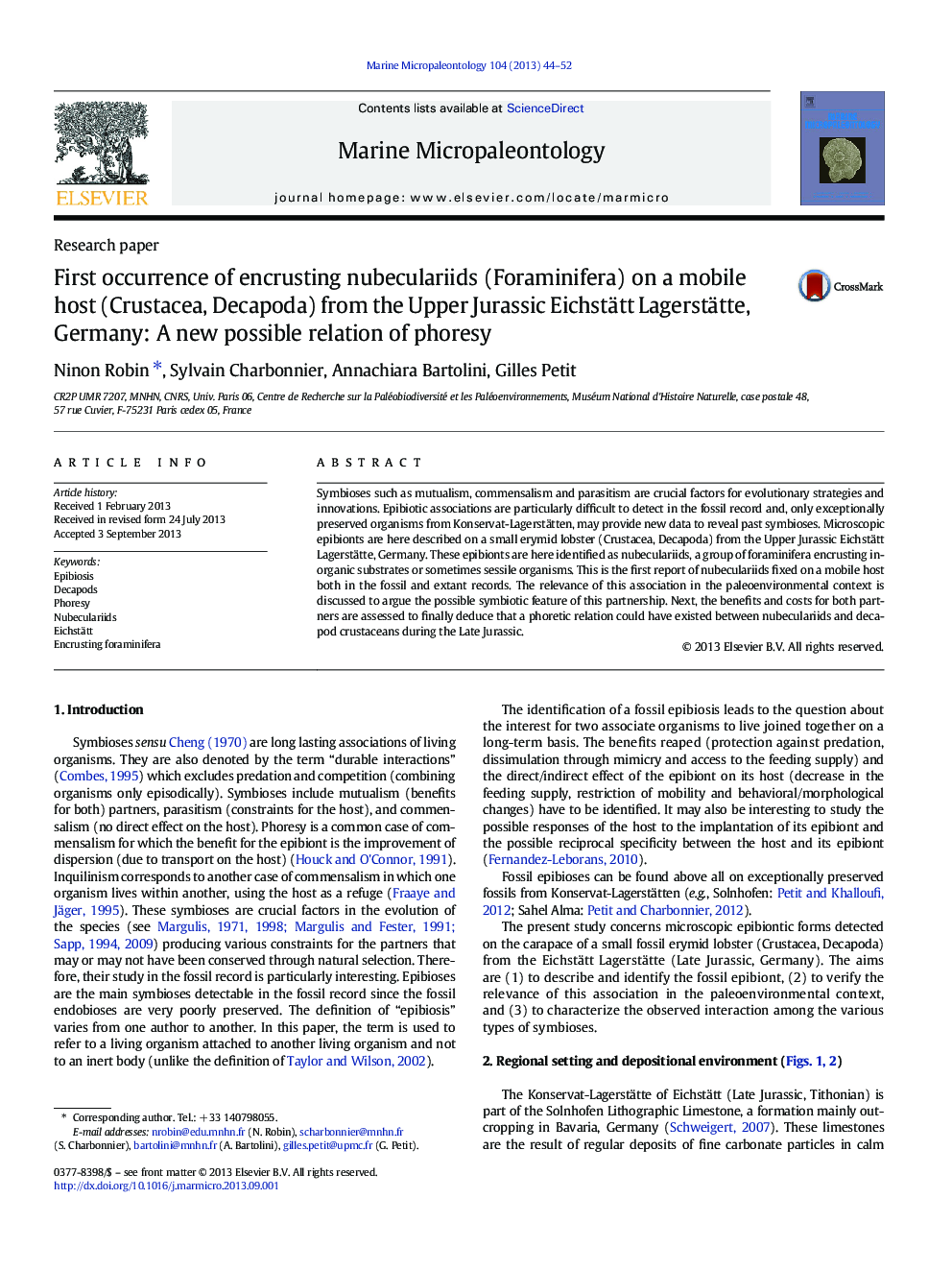| Article ID | Journal | Published Year | Pages | File Type |
|---|---|---|---|---|
| 4748878 | Marine Micropaleontology | 2013 | 9 Pages |
•Fossil microscopic epibionts have been detected on a lobster from Eichstätt, Germany.•Epibiont morphology and chemical composition allow identifying them as nubeculariids.•Nubeculariids (encrusting foraminifera) are usually settled on motionless substrates.•This attendance on a mobile host can bring benefits to epibionts.•The association could correspond to a new phoretic interaction occurring on decapods.
Symbioses such as mutualism, commensalism and parasitism are crucial factors for evolutionary strategies and innovations. Epibiotic associations are particularly difficult to detect in the fossil record and, only exceptionally preserved organisms from Konservat-Lagerstätten, may provide new data to reveal past symbioses. Microscopic epibionts are here described on a small erymid lobster (Crustacea, Decapoda) from the Upper Jurassic Eichstätt Lagerstätte, Germany. These epibionts are here identified as nubeculariids, a group of foraminifera encrusting inorganic substrates or sometimes sessile organisms. This is the first report of nubeculariids fixed on a mobile host both in the fossil and extant records. The relevance of this association in the paleoenvironmental context is discussed to argue the possible symbiotic feature of this partnership. Next, the benefits and costs for both partners are assessed to finally deduce that a phoretic relation could have existed between nubeculariids and decapod crustaceans during the Late Jurassic.
